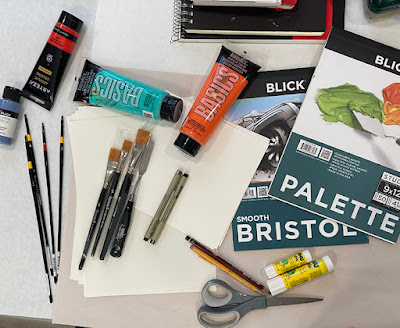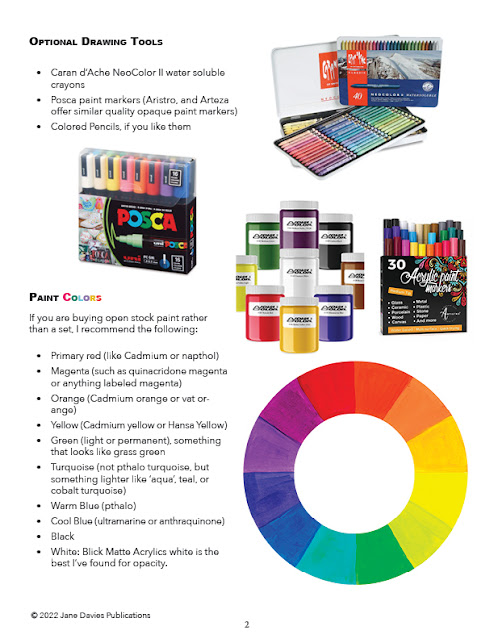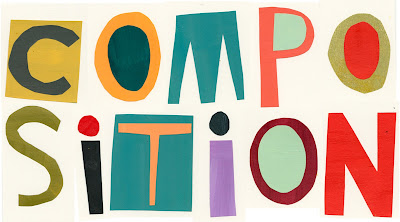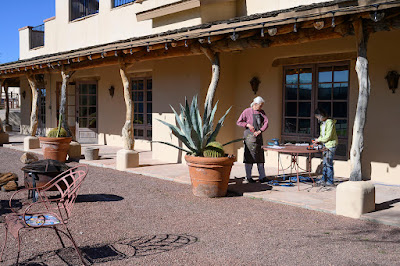Those of you who have taken my workshops know that the lens through which I look at composition, composing, is contrast. Color, value, scale, quality of line or edge.... I look at contrasts, differences more than I look for repetition, "echoing", or sameness. But a crucial aspect of contrast is degree.
Contrast does not always mean 'high contrast' as in black and white or red and green (value, color). It doesn't have to mean tiny and huge, or soft and hard (edges, e.g.). I look at degrees of contrast - subtle contrasts and dramatic ones, and everything in between. How subtle can I make this contrast in value (for example) and have it read as different rather than the same. Or how little dramatic contrast can I inject to make a big difference in a piece?
I have been looking at all-over patterns or designs that read as very compelling images, to me. Often, too much repetition creates a weak and blah piece. Nothing speaks out because everything is speaking at the same time. So what is it about these images that I find so powerful, even though they have this all-over repeating characteristic?
Here are a few images from a Pinterest board I call (tongue in cheek) "Wallpaper". Please see the board for attribution of these images and many more examples.
Check out Japingka Aboriginal Art Gallery for so so so many inspiring examples of contemporary Aboriginal art, much of which makes use of a repeated mark - dots, brushstrokes, stripes. Take a look at the gorgeous (to me) work of Carbiene McDonald at Outstation, which represents contemporary Indigenous art and works directly with Aboriginal owned art centers.
Here is one of Carbiene McDonald's pieces:
Look at Emily Kame Kngwarreye's work here. These are a couple of pieces of hers. Dots and stripes! What could be simpler? But what is it that makes them so compelling?
Aboriginal art is my new inspiration, but it makes me look at art that is based on a repeated mark in a new light. The repetition, done by hand, makes you see the subtle contrasts, the subtle shifts of color or scale or angle or nuance. This is some of what I've been exploring in my stripe pieces. Thanks for visiting!
Note: be aware of cultural appropriation. The repeated mark is used EVERYWHERE, and is not confined to the art of Indigenous Peoples. However, if you are inspired by the work of a culture, read this. In general, when inspired by a culture, a movement, or an individual artist, steal, don't copy. That is, do enough work to make it your own. Make lots and lots and lots of pieces until the work is your own. Be honest with yourself.
























































